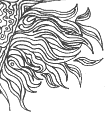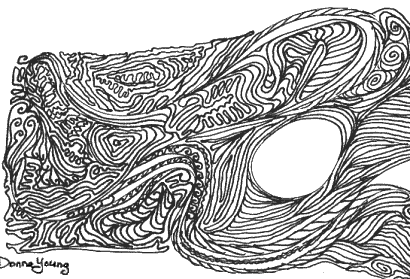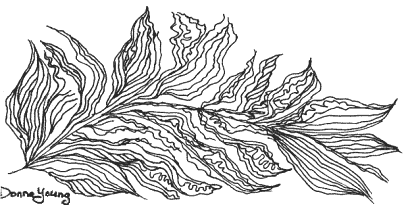 Doodle Art
Doodle Art
I planned the first week to be a disciplined approach to doodling lines or that is what it appears to be. Actually, the whole purpose of this week's exercise is to draw lines in a controlled manner, not completely mindless doodling, and then to observe the effect that the lines have on the drawing as a whole. It is an easy week of exercises because the student is not drawing anything in particular; it is hard because the lines need to be drawn carefully. It is a move toward solidifying the idea of the disciplined hand in drawing.
Disciplined Hand in Drawing
"What is usually so much sought after under the term "freedom" is the character of the drawing of a great master in a hurry, whose hand is so thoroughly disciplined, that when pressed for time he can let it fly as it will, and it will not go far wrong. But the hand of a great master at real work is never free: its swiftest dash is under perfect government. - - - You must never, therefore, aim at freedom. It is not required of your drawing that it should be free, but that it should be right: in time you will be able to do right easily, and then your work will be free in the best sense; but there is no merit in doing wrong easily."
Quote from The Elements of Drawing; in Three Letters to Beginners by John Ruskin (1876)
This Week's Drawing Exercise
Note: All of the exercises that I post regarding Holly's art class are for children who are 12 and older and are artistically inclined. You will know if your child is artistically inclined because the child will draw without being told on any given day, at any time, daily.

To make the drawings do the following. Start by drawing a single curving line. Add another line, it can merge with the first line or not. When you join the lines, merge them at an angle that is not 90 degrees or close to 90 degrees. Merge them at a more obtuse or more acute angle. Finally, fill in the spaces with more lines merging them into other lines. When drawing the lines, pay attention to the distance from the other lines and pay attention to the shape of the lines. Most of the work will be echo lines and some of the work will be a sprout of a new shape. When you are finished look at your work from several feet away to observe the effects of the lines on the drawing as a whole. Make two drawings a day that measure at least 20 square inches (4x5, 5x5 , 4x6, 5x7).
- Materials:
- 9 x 12 sheet of drawing paper, 60-70 lb.
- pencil
- fine point marker
Examples:
The first two examples are drawings that I did just to show her what I wanted her to do.


Holly's work quickly improved from day one to day two and shown below is her work from day three.

Next week she will begin contour drawing and during the first week she will practice blind contour drawing and use an easel.
Of course it isn't school unless you have terms. I do not want to list all of the terms, but here are two: Contour Line: Contour line is a single line, deliberately and slowly executed. It defines edges of planes as well as interior and exterior edges. There is typically no erasure work or correction in pure contour line. Henri Matisse and Pablo Picasso provide some good examples of simple contour line. Blind Contour: While drawing, one only looks at the subject and not at the paper.

 Related
Related
 V Planner- How to set up a special s-sheet for the 2nd semester
V Planner- How to set up a special s-sheet for the 2nd semester Printable human skeleton paper
Printable human skeleton paper


